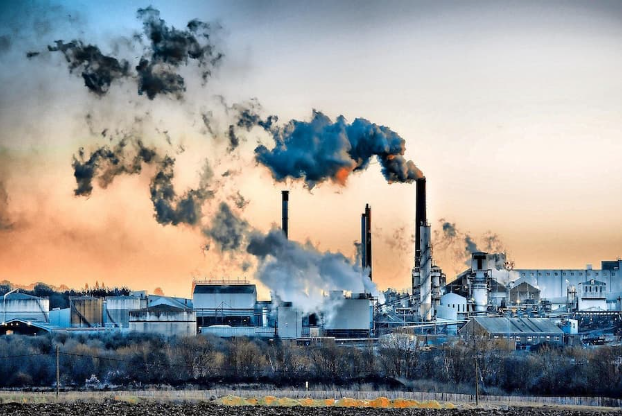Industrial Waste: What Is It?
Around the world, there are numerous millions of factories, mills, businesses, mining facilities, etc. To create final commodities that people can purchase, these sectors use beginning materials. However particular supplies are wasted throughout the entire production process. They make up the garbage from industry. Electromagnetic wastes, paints, sandpaper, slag, ash, and metallurgy are a few types of waste from manufacturing. The various categories of industrial trash and their disposal will be covered in this article. Search for skip hire locally to hire someone to clean your surroundings right away.
Byproducts from production, manufacturing, and other industrial processes are referred to as industrial waste. Depending on the kind of industry, the materials utilized, and the techniques employed, these wastes might differ greatly. Ensuring appropriate handling and elimination of industrial waste is crucial in safeguarding both the natural world and public health. The most typical categories of industrial waste are as follows:
Biodegradable Wastes
Wastes that can be broken down by germs into more basic, safe compounds are referred to as biodegradable wastes. Biodegradable industrial wastes are mostly produced by a few industries, including the food, paper, sugar, and wool sectors. These wastes are simply and inexpensively managed.
Non-Biodegradable Wastes
Microorganisms are unable to break down waste that is not biodegradable further. The main source of poisons in landfills is this kind of garbage. Materials that are not biodegradable include things like chemicals, plastics and metals paints, rubber, etc. These substances won’t deteriorate over hundreds of thousands of years in landfills. Both plastics and metals release toxins that seep into the ground, contaminating the environment and water supplies.
Hazardous Debris
The generic classification of toxic wastes also identifies all wastes capable of posing health risks to man or other living organism or wastes that negatively affect the physical environment within which people live. Such a waste can be gaseous, liquid and even a solid at one time or the other. There are different types of hazardous wastes for instance, the oil, chemicals and the pesticides. Chemical raw materials that are in the form of toxic waste has to be disposed appropriately to prevent negative impacts on both humans and the environment also.
Solid Waste
On the other hand there is the definition of solid wastes which is wastes of the solid type. This type of waste can be produced in homes, factories, or construction sites as well as any other place that people conduct their business. Some of the examples of the solid waste include paper, glass, metal plating, and plastics and garbage. Everyone wants to have a clean environment and proper disposal of solid wastes is very important in achieving this goal.
Liquid Garbage
Any kind of garbage that is liquid qualifies as liquid waste. Waste of this kind may originate in homes, factories, or building sites. Liquid waste includes substances such as chemicals, oil, and sewage. It’s important to dispose of liquid waste correctly to protect the environment.
Chemical Waste
Chemical waste is one of the most significant forms of industrial waste and may stem from any business or business sector, including manufacturing, petrochemicals and pharmaceuticals. Hazardous as well as non-hazardous materials including but not limited to solvents that are acids and alkalis, and other toxic substances including lead, zinc cadmium, and mercury among others make this category of garbage.
Some of the examples include pesticides, paint residues, industrial solvents, cleaning products among others.
Impact on the Environment: Hazardous wastes if not well dealt with may cause harm to human health and the environment through soil and water pollution. However, certain dangerous chemicals require special measures of handling the products as well as disposing of the chemicals.
Radioactive Waste
Nuclear energy-related companies, healthcare facilities that use radioactive substances for study or treatment, and specific manufacturing processes all produce radioactive waste. Because of its hazard, this kind of trash needs to be disposed of and contained carefully.
- Examples include spent nuclear fuel, radiation therapy materials, and medicinal isotopes.
- Environmental Impact: There are significant long-term concerns to both the environment as well as human health associated with radioactive waste. When materials are disposed of properly, they are usually contained in safe, secure facilities where they will remain isolated for millennia or until the radioactivity falls to acceptable levels.
Term Clarification On Industrial Waste
It is outside the purview of this blog post to discuss the subtle differences between these phrases. Here, they go into further information about it. But keep in mind that it’s important to be explicit about them, depending on the nature of the conversation and the person speaking.
- First and foremost, state environmental rules are typically more stringent than federal ones, and you risk serious fines and penalties from the EPA if you unintentionally or intentionally dispose of hazardous trash into a community waste stream.
- Since falsely classifying non-hazardous trash as hazardous increases the amount of hazardous garbage you have to dispose of
In contrast to, carelessly combining two hazardous materials creates a single hazardous waste, further inflating your hazardous waste handling costs.
Final Words
Industries can implement more environmentally friendly procedures and lessen their environmental impact by knowing the various forms of waste from manufacturing and their environmental impact by knowing the various forms of waste from manufacturing and their impacts. The Ultimate Guide to the iOS App eTrueSports
